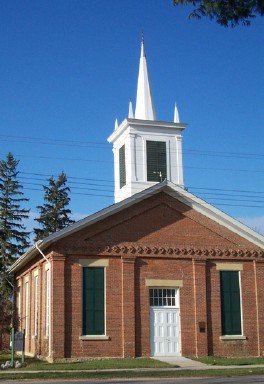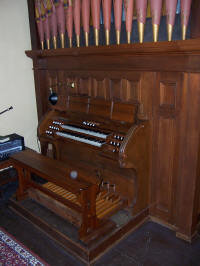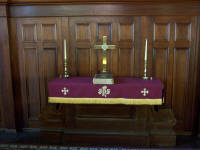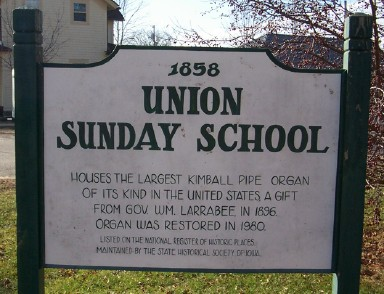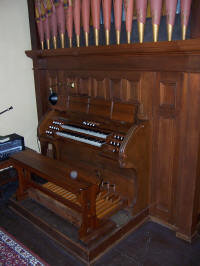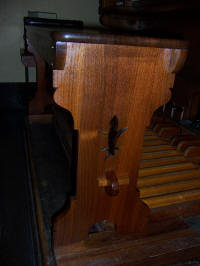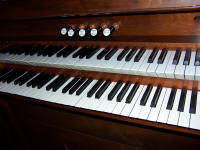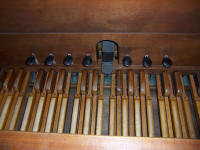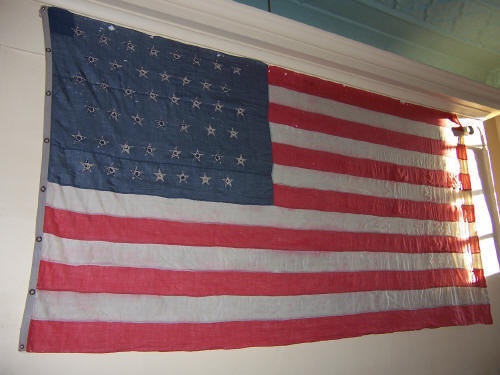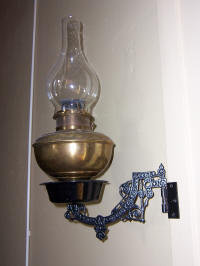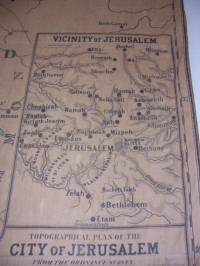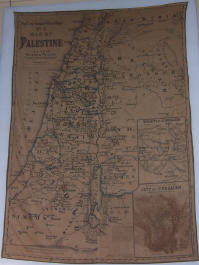History of the Union Sunday School
The organization called the Clermont Union Sunday School was organized before the Civil War in 1857, and until its closing in 1963 was the oldest continuing organization in Clermont. Its first meetings were held in the home of Mrs. Edwin Stedman, the first of seven superintendents; the others being Mrs. Loomis, Mrs. William Larrabee Sr., Mrs. Fred Cline. Mrs. Cline gave 30 years of service in that capacity. The bell used on the superintendent’s desk to call the first meeting to order in 1857 was the same one used to call the last to order in 1963. It is engraved with the names of the superintendents in order of their service.
After the Presbyterian Church was built and dedicated in 1863, the members of the Sunday School met in that building. The Presbyterian group soon disbanded, and an agreement was entered into by Governor Larrabee and the Presbyterian Synod that the building should be used by the Sunday School as long as it was kept in good repair. At one time the enrollment was over 80. The beautiful pip organ was a gift from Governor Larrabee to his daughter, Anna, who presided at that instrument for over 60 years.
The highlight of the year in the Sunday School was the Christmas program, with a pine tree reaching to the ceiling decorated with tinsel and many white bells and silver chains. This was used as a community tree, and in many instances families not affiliated with other churches were privileged to participate in the gift exchange at the school. The program always closed with the traditional “Song of the Pine,” with Miss Larrabee at the organ.
 In the early days libraries were unheard of in towns as small as Clermont. Mrs. Loomis, then acting superintendent, and Mrs. Larrabee Sr. felt the need of a library and decided to do something about it. It is not definitely known when it was started, but the records show that in 1880 Caroline Riser, later Mrs. H.H. Follet, was named as librarian. There were many books in the library at that time, and in 1939 the books were catalogued numbering 800. It was in this building during a morning service in 1865, that a rider appeared and announced the death of Abraham Lincoln.
In the early days libraries were unheard of in towns as small as Clermont. Mrs. Loomis, then acting superintendent, and Mrs. Larrabee Sr. felt the need of a library and decided to do something about it. It is not definitely known when it was started, but the records show that in 1880 Caroline Riser, later Mrs. H.H. Follet, was named as librarian. There were many books in the library at that time, and in 1939 the books were catalogued numbering 800. It was in this building during a morning service in 1865, that a rider appeared and announced the death of Abraham Lincoln.
A group of people desired to hold Protestant services, and received permission to use the Union Sunday School. Rev. J.J. Snyder of Elgin served first (1933) as minister of what was known as the Union Church until 1943, when it became Methodist. Other ministers who served were Rev. Warton, Rev. Steinman, Rev. Jones, Rev. Caspers and Rev. Collins. Miss Anna Larrabee was generous in helping the group, sharing fuel and electric bills. Working against odds, this group finally closed its books in June, 1966.
Miss Anna Larrabee at the Big Kimball Organ.
The Union Sunday School was originally built as a Presbyterian Church in 1858. In the 1870s it became non-denominational and renamed the Union Sunday School. In 1896, Gov. and Mrs. Wm. Larrabee ordered a magnificent organ from the Kimball Company in Chicago for the Union Sunday School. Now completely restored and completely operational, it remains a showpiece of the town. The pressed-tin ceiling is original to the building. The drop lights were added after electricity was installed in 1910.Walls and windows are very plain, typical of a New England church. The divided sanctuary was used to separate the male and the female congregation. The building is now the property of the Iowa State Historical Society and is listed on the National Registry of Historic Places. It is currently used for organ recitals and Christmas Vesper Services.
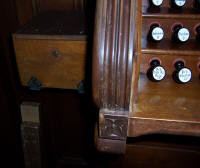
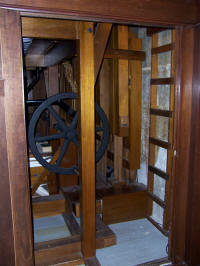
The walnut case of the Kimball Pipe Organ measures 20 feet long, 11 feet deep and 7 1/2 feet high. The pipes extend up to make a height of more than 16 feet. Encased in a massive walnut cabinet the organ consists of two keyboards with 61 notes each and a flat pedal board of 30 notes and 27 sets of pipes. The instrument had to be hand-pumped until 1910, when an electri blower was installed. The organ can still be operated manually. The organ action is tubular pneumatic. Far Right: Close up of a free-standing altar. Before the organ came, the choir was in the space where the altar is now. The choir loft was then moved to the back of the church.
Organ enthusiasts will note that the pedals are not curved as they are in today’s modern organs, thus making the playing of this organ difficult due to the wide stretch.
The Union Sunday School houses one of the first lending libraries west of the Mississippi. The lending library was part of the Union Sunday School where children and adults could check out books on Sunday. One person in charge would write down the person’s name and the name of the book to be returned the following Sunday in good condition. All of the books were donated by the Larrabee family. The collection includes fiction, non-fiction, a collection of Shakespeare, and books typical of that era highlighting stories with moral values.
This flag was flown over main street Clermont, Iowa in 1903 during the celebration of the last reunion of the Iowa Civil War Soldiers Company C., the group that was formed at Upper Iowa University during the Civil War. Captain Warner was instrumental in forming this group and David B. Henderson was one of the soldiers. Many of the Iowa Civil War Soldiers came from Fayette County and surrounding areas.
Original kerosene lamp that was used prior to 1910, when electricity came into the community.
Purchased by the Larrabee family during a trip to the Middle East. Depicts various locations of the Holy Land and the City of Jerusalem. Map material is of linen.
Organ concerts are still held in the Union Sunday School in the summer months. Please check the calendar for dates and information.
The Montauk Mansion, Union Sunday School, and Clermont Museum are operated by the State Historical Society of Iowa.
These pictures have been approved by the Iowa State Historical Society.
Photos taken by Renee Matt, Clermont, Iowa webmaster


